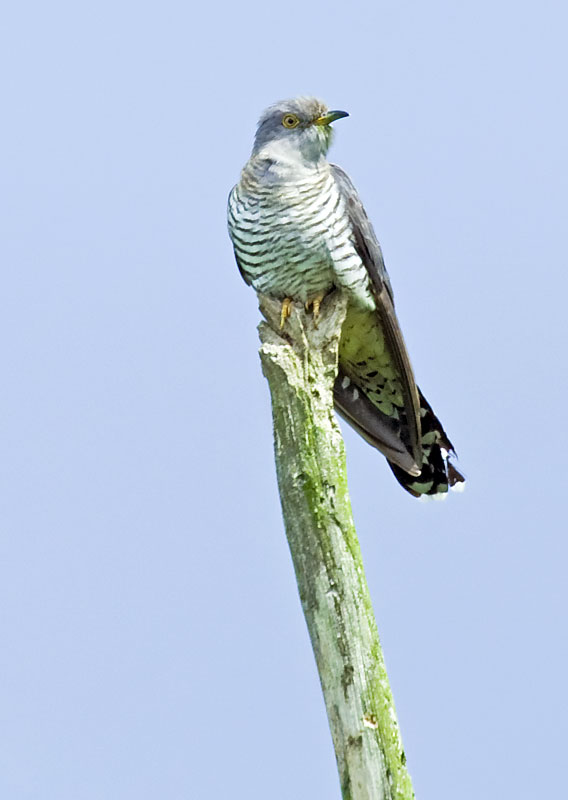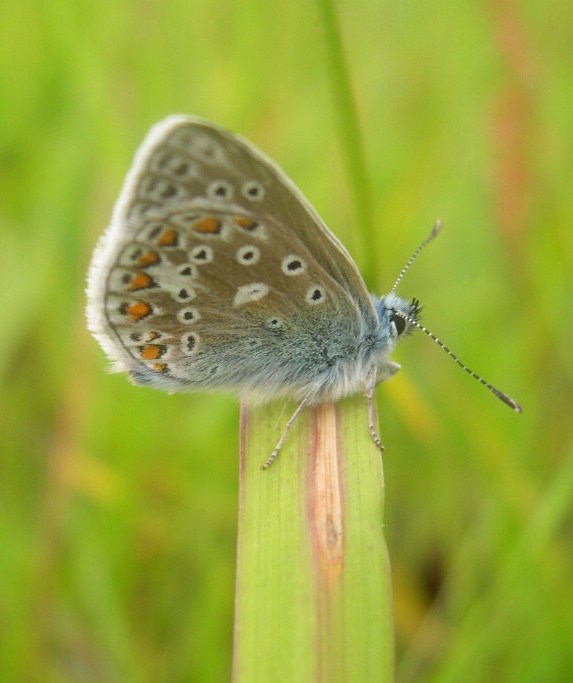This
Month on the Emmbrook
What to look for if you are out and about in
MAY
General
The month of May is a wonderful time to see wildlife on and around the Emm brook. As spring slips into May, many of our resident birds are on eggs or feeding young, most summer migrants are singing to defend territories and attract mates but a few are still to make their entrance.
Birds

Our summer migrants are here and their songs are mixed in with the residents. Summer specialities such as Cuckoo, Swifts and Swallows bring a special edge to wildlife watching. Cuckoos can sometimes be heard calling at Riverside Walk but are more reliable adjacent to the Emm brook at Lavells Lake LNR. Warblers fill the woodlands and hedgerows . In the open spaces alongside the Emm Blue Tits, Great Tits, Robins, Blackbirds and Song thrushes lead a frantic life seeking food for the insatiable appetite of their young. Another summer migrant the Hobby can be seen feeding on damsel and dragonflie over the Emm particularly adjacent to the golf course at Dinton Pastures.
Insects
If you hear a thump against the outside of a window on a May night it may well be a Cockchafer beetle. This is one of our largest beetles and the brown, slightly fury adult appears in May, and heads towards street lights and lit windows in search of a mate. The pupae live for two years as plump 'c' shaped larva in the soil and form an important food source for rooks and crows.
By mid May dragon and damselflies have started to emerge and quickly go about breeding.
Mayflies also emerge on sunny days in May
Butterflies

Amongst the insects that have already emerged are some of the blue butterflies such as Holly Blue and the Common Blue. Common Blues feed on the flowers of the pea species, but the adults only have a short three week life span. However as there are up to three generations in one year you get a number of chances to see this beautiful butterfly.
Other Wildlife
As the light fades, many birds become less active, but another set of predators, the bats, take over to exploit night-flying insects. Most widespread is the diminutive Pipistrelle which catches thousands of small insects each night to maintain its body weight of just 5 grams. Bats use their sonic location equipment to hunt them out. In gardens strange noises emerging in the night may well be mating Hedgehogs.
Plants & Trees
Many of the trees and hedgerow shrubs were breaking into leaf by the middle of April and are now festooned with bright, fresh almost iridescent young leaves. The Blackthorn flowers are over and have turned brown, but the Hawthorn flowers (or 'may') provides breathtaking white ribbons crisscrossing the countryside and lining even the most uninspiring roads. Towards to end of the month the Elder also flowers with big saucers of tiny flowers. The Ash is one of the last to break into leaf. Its mat black hard casings eventually split to reveal the new expanding growth below. The Ash will be one of the first to lose its leaves too,.
Cow Parsley is now profuse in the hedgerows and river bankwith its white umbellifer flowers . Red Campion and Greater Stitchwort replace the early spring flowers.
